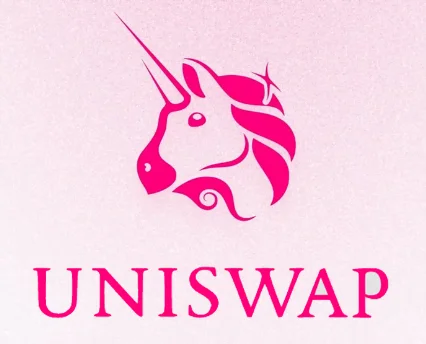In cryptocurrency trading, different crypto exchanges cater to different kinds of traders and investors. In this article, we will demystify the different types of crypto exchange which are Spot, DEX, and Derivatives, and learn about their key differences.

Spot Exchanges
Spot exchanges are the most common type of cryptocurrency exchange. These exchanges allow traders to buy and sell cryptocurrencies at the current market price. Spot exchanges are often referred to as centralised because they are operated by a centralised entity acting as an intermediary between buyers and sellers.
Some examples of spot exchanges include Coinbase, Binance, and Kraken.
Characteristics of Spot Exchanges
- Traders can buy and sell cryptocurrencies at the current market price.
- The exchange acts as an intermediary between buyers and sellers.
- The exchange holds the traders’ funds, which can be a security risk.
- The exchange charges a fee for each trade.
Decentralised Exchanges (DEX)
Decentralised exchanges, or DEXs, are a newer type of cryptocurrency exchange that aims to eliminate the need for intermediaries. DEXs allow users to trade cryptocurrencies directly with each other without the need for a centralised entity to act as an intermediary.
DEXs are often called peer-to-peer exchanges, as they facilitate direct trades between users. DEXs use smart contracts to execute trades automatically recorded on the blockchain.
Some examples of DEXs include Uniswap, PancakeSwap, and Sushiswap.

Characteristics of DEXs
- DEXs allow users to trade cryptocurrencies directly with each other without the need for an intermediary.
- DEXs use smart contracts to execute trades automatically.
- DEXs are decentralised and do not hold users’ funds, which makes them less susceptible to hacks and security breaches.
- DEXs charge lower fees compared to centralised exchanges.
Derivatives Exchanges
Derivatives exchanges are a type of cryptocurrency exchange that allows traders to trade financial instruments that derive their value from an underlying asset. These instruments include futures, options, and swaps.
Professional traders and institutions often use derivatives exchanges, as they offer a way to hedge against price volatility and manage risk.
Some examples of derivatives exchanges include BitMEX, Binance Futures, and FTX.
Characteristics of Derivatives Exchanges
- Derivatives exchanges allow traders to trade financial instruments that derive value from an underlying asset.
- Professional traders and institutions often use derivatives exchanges to hedge against price volatility and manage risk.
- Derivatives exchanges often offer leverage, which allows traders to increase their exposure to the market.
- Derivatives exchanges can be risky, as traders can lose more than their initial investment due to leverage.

Key Differences Between Spot, DEX, and Derivatives Exchanges
There are several key differences between spot, DEX, and derivatives crypto exchanges:
- Intermediary
- Funds
- Fees
- Trading instruments
- Risk
>Intermediary
Spot and derivatives exchanges are operated by centralised entities acting as intermediaries between buyers and sellers. At the same time, DEXs allow users to trade cryptocurrencies directly with each other without needing an intermediary.
>Funds
Spot and derivatives exchanges hold users’ funds, which can be a security risk, while DEXs are decentralised and do not hold users’ funds.
>Fees
Spot exchanges and derivatives exchanges charge higher fees compared to DEXs.
>Trading Instruments
Spot exchanges allow traders to buy and sell cryptocurrencies at the current market price. In contrast, derivatives exchanges enable traders to trade financial instruments that derive value from an underlying asset. DEXs only allow for direct trading of cryptocurrencies.
>Risk
Derivatives exchanges can be risky, as traders can lose more than their initial investment due to leverage, while spot exchanges and DEXs do not offer leverage, making them less risky.
Which Exchange is Right for You?
Choosing the right crypto exchange depends on your trading goals and risk tolerance. Here are some factors to consider to help you determine which exchange is suitable for you:
- Trading Goals
- Risk Tolerance
- Fees
>Trading Goals
A spot exchange is likely the best choice if you want to buy and hold cryptocurrencies. A derivatives exchange is better if you want to trade financial instruments like futures and options.
>Risk Tolerance
A DEX is likely the best choice if you are risk-averse and want to minimise your exposure to hacks and security breaches, but If you are willing to take on more risk and want to profit from leverage, a derivatives exchange is a better choice.
>Fees
A DEX is likely the best choice if you want to minimise trading fees, whereas a spot exchange is likely the best choice if you prioritise liquidity and want to access a wide range of trading pairs.
Conclusion
In summary, there are three main types of cryptocurrency exchanges: spot, DEX, and derivatives exchanges. Spot exchanges are centralised and allow traders to buy and sell cryptocurrencies at the current market price, while DEXs are decentralised and allow for direct trading between users. Derivatives exchanges enable traders to trade financial instruments that derive value from an underlying asset.
Choosing the right crypto exchange depends on your trading goals, risk tolerance, and priorities. Whether you choose a spot exchange, DEX, or derivatives exchange, it’s essential to do your research and understand the risks involved.
